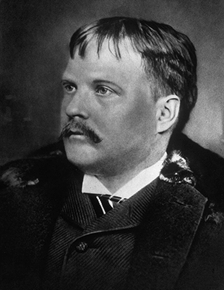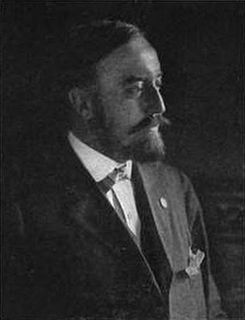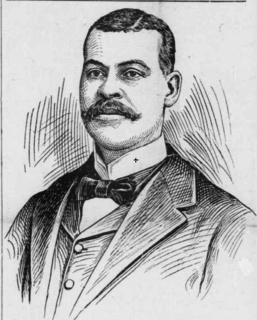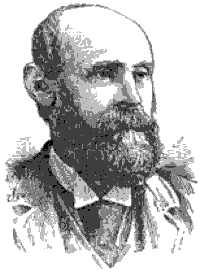Related Research Articles

Eero Saarinen was a Finnish-American architect and industrial designer noted for his wide-ranging array of designs for buildings and monuments. Saarinen is best known for designing the Washington Dulles International Airport outside Washington, D.C., the TWA Flight Center in New York City, and the Gateway Arch in St. Louis, Missouri. He was the son of noted Finnish architect Eliel Saarinen.

Michael Graves was an American architect, designer, and educator. As well as principal of Michael Graves and Associates and Michael Graves Design Group, he was of a member of The New York Five and the Memphis Group – and professor of architecture at Princeton University for nearly forty years. Following his own partial paralysis in 2003, Graves became an internationally recognized advocate of health care design.

Richard Meier is an American abstract artist and architect, whose geometric designs make prominent use of the color white. A winner of the Pritzker Architecture Prize in 1984, Meier has designed several iconic buildings including the Barcelona Museum of Contemporary Art, the Getty Center in Los Angeles, and San Jose City Hall.

Sir Giles Gilbert Scott was a British architect known for his work on the New Bodleian Library, Cambridge University Library, Lady Margaret Hall, Oxford, Battersea Power Station, Liverpool Cathedral, and designing the iconic red telephone box. Scott came from a family of architects. He was noted for his blending of Gothic tradition with modernism, making what might otherwise have been functionally designed buildings into popular landmarks.

Peter Eisenman is an American architect. Considered one of the New York Five, Eisenman is known for his writing and speaking about architecture as well as his designs, which have been called high modernist or deconstructive.

John Wellborn Root was an American architect who was based in Chicago with Daniel Burnham. He was one of the founders of the Chicago School style. Two of his buildings have been designated a National Historic Landmark; others have been designated Chicago landmarks and listed on the National Register of Historic Places. In 1958, he was posthumously awarded the AIA Gold Medal.

Robert Arthur Morton Stern, usually credited as Robert A. M. Stern, is a New York City–based architect, educator, and author. He is the founding partner of the architecture firm, Robert A.M. Stern Architects, also known as RAMSA. From 1998 to 2016, he was the Dean of the Yale School of Architecture.

James Gamble Rogers was an American architect. He is best known for his academic commissions at Yale University, Columbia University, Northwestern University, and elsewhere.
Kirkwood is a national historic designated neighborhood on the east side of Atlanta, Georgia, United States. It is a historic streetcar suburb, and was designed by architect Will Saunders. Kirkwood is situated entirely in DeKalb County, bordered by the neighborhoods of Lake Claire, East Lake, Edgewood, and Oakhurst. Kirkwood is bound on the north by DeKalb Avenue, on the south by Memorial Drive and Interstate 20, on the west by Montgomery Street, and on the east by 1st Ave. A large part of the neighborhood is listed on the National Register of Historic Places as Kirkwood Historic District.

Paul Marvin Rudolph was an American architect and the chair of Yale University's Department of Architecture for six years, known for his use of concrete and highly complex floor plans. His most famous work is the Yale Art and Architecture Building, a spatially complex brutalist concrete structure.

Alexander Jackson Davis, or A. J. Davis, was an American architect, known particularly for his association with the Gothic Revival style.

Druid Hills Historic District is a historic district in Druid Hills and Atlanta in DeKalb County, Georgia, United States, that is listed on the National Register of Historic Places (NRHP}.
Howard Dwight Smith was an architect most known for his designs of the Ohio Stadium for which he was awarded the American Institute of Architects Gold Medal for Public Building Design.

McKim, Mead & White was an American architectural firm that came to define architectural practice, urbanism, and the ideals of the American Renaissance in fin de siècle New York. The firm's founding partners Charles Follen McKim (1847–1909), William Rutherford Mead (1846–1928) and Stanford White (1853–1906) were giants in the architecture of their time, and remain important as innovators and leaders in the development of modern architecture worldwide. They formed a school of classically trained, technologically skilled designers who practiced well into the mid-twentieth century. According to Robert A. M. Stern, only Frank Lloyd Wright was more important to the identity and character of modern American architecture.

Henry Hornbostel was an American architect and educator. Hornbostel designed more than 225 buildings, bridges, and monuments in the United States. Twenty-two of his designs are listed on the National Register of Historic Places, including the Oakland City Hall in Oakland, California and the Soldiers and Sailors Memorial Hall and Museum and University Club in Pittsburgh, Pennsylvania.

John Carl Warnecke was an architect based in San Francisco, California, who designed numerous notable monuments and structures in the Modernist, Bauhaus, and other similar styles. He was an early proponent of contextual architecture. Among his more notable buildings and projects are the Hawaii State Capitol building, the John F. Kennedy Eternal Flame memorial gravesite at Arlington National Cemetery, and the master plan for Lafayette Square.

John A. Lankford was the first professionally licensed African American architect in Virginia in 1922 and in the District of Columbia in 1924. He has been regarded as the "dean of black architecture".

William Butts Ittner was an architect in St. Louis, Missouri. He designed over 430 school buildings in Missouri and other areas, was president of the St. Louis Chapter of the American Institute of Architects from 1893 to 1895, was awarded an honorary degree by the University of Missouri in 1930, served as president of the Architectural League of America during 1903–04, and at the time of his death was president of the St. Louis Plaza Commission, a fellow and life member of the American Institute of Architects, and a thirty-third degree Mason. He was described as the most influential man in school architecture in the United States and has a star on the St. Louis Walk of Fame. He was appointed St. Louis School Board commissioner in 1897 and is said to have designed open buildings that featured "natural lighting, inviting exteriors, and classrooms tailored to specific needs." In 1936, Ittner died. His legacy is survived by the William B. Ittner, Inc. and Ittner & Bowersox, Inc. architecture firms in St. Louis.
Alexander F. N. Everett, also known as A. F. N. Everett, was an American architect who designed many buildings in his hometown of Atlanta, Georgia, including some listed on the National Register of Historic Places.

Alexander Campbell Bruce (1835–1927), also known as A. C. Bruce, was an American architect based in Atlanta, Georgia.
References
- ↑ Steven H. Moffson; Lynn Speno (June 7, 2002). "National Register of Historic Places Inventory/Nomination: Kirkwood School / Kirkwood Elementary School". National Park Service . Retrieved September 17, 2019. With accompanying 28 photos
- ↑ "The Annual of the Columbia University School of Architecture". 1915.